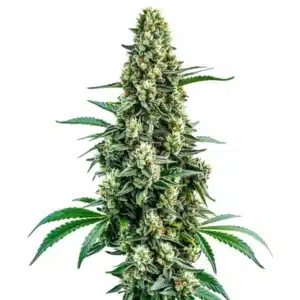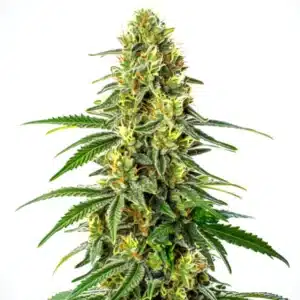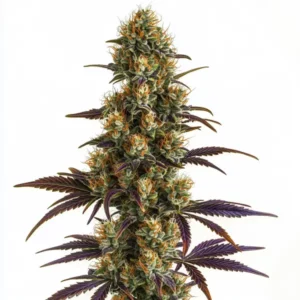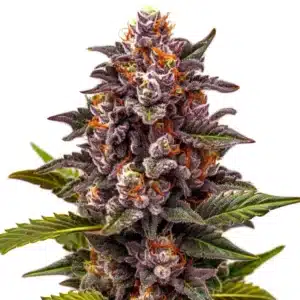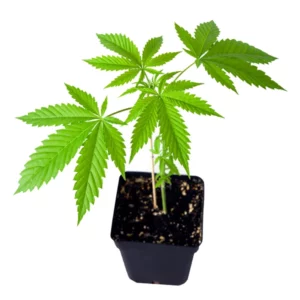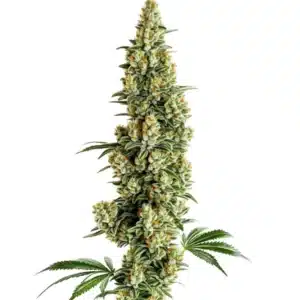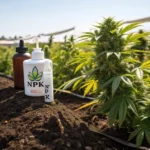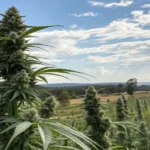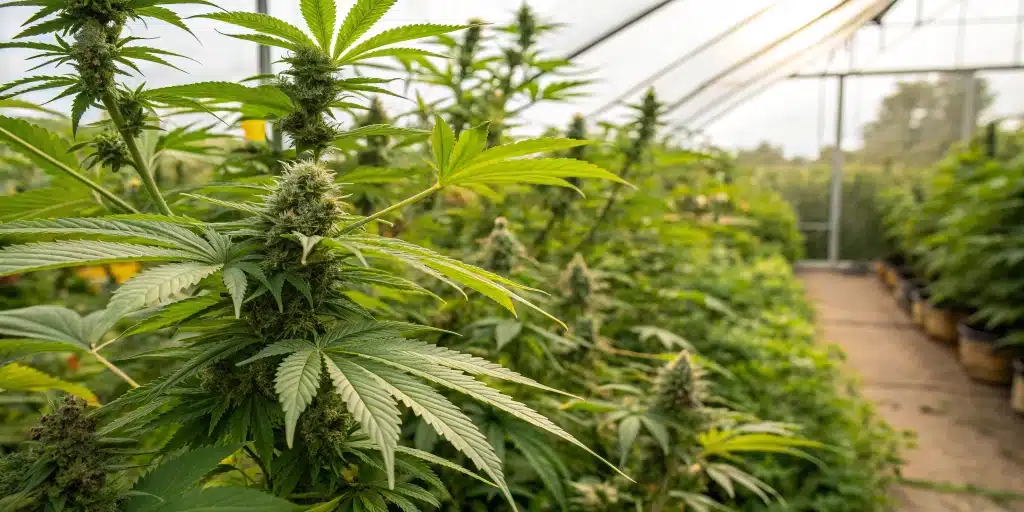
Manage Outdoor Plants Flowering Too Early: Effective Strategies for Cannabis Cultivation
Recognizing Early Flowering in Outdoor Plants
Outdoor plants flowering too early can catch even seasoned growers off guard. When you notice buds forming before the proper time, it may be a sign that your garden is shifting its natural rhythm. It is also important to consider the plant’s sex, as male cannabis plants naturally tend to show their flowers earlier than females. What appears to be premature flowering might simply be a male plant revealing itself. Look for small blossoms and unusual growth patterns as clear signals that something is off. Keeping an eye on these early signs helps you adjust your practices promptly and maintain control over your garden’s development.
Pay close attention to signs and symptoms such as stunted leaf growth or clusters of premature buds. These symptoms often indicate that outdoor plants flowering too early are stressed by environmental factors. Monitoring these early signals gives you a chance to intervene before the plants set seed or lose potency. By learning these visual cues, you can fine-tune your setup to prevent unwanted early flowering and support a more balanced growth cycle.
Recommended Strains
Chocolope Kush Regular
|
|
THC | 15% - 18% (Medium) |
|
|
Type | Regular |
|
|
Yield | High |
|
|
Phenotype | 70% Indica / 30% Sativa |
Chocolope Regular
|
|
THC | 18% - 24% (Medium) |
|
|
Type | Regular |
|
|
Yield | Medium |
|
|
Phenotype | 20% Indica / 80% Sativa |
Environmental Influences on Flowering Timing
Temperature and light play a significant part in the timing of flowering. Warmer days and sudden bursts of sunlight can trigger outdoor plants flowering too early, pushing them into bloom sooner than expected. The intensity and duration of natural light directly affect the internal clocks of your plants. It is important to manage these factors carefully by providing appropriate shading or relocating your garden to maintain a balanced light exposure.
A very common trigger for early flowering occurs when moving plants from an indoor to an outdoor environment. If you start your plants indoors under an 18-hour light cycle and then move them outside in early spring (like April or early May) when there are only 12-14 hours of natural daylight, the sudden decrease in light tricks the plant into flowering prematurely. However, as the days continue to lengthen toward summer, the plant can become confused by the increasing light hours and revert to vegetative growth in a process called revegetation. This strange cycle of budding then returning to leafy growth can often be mistaken for the plant being an autoflowering variety instead of a photoperiod one, or simply maturing in an unusual way.
Nutritional and Soil Factors
Soil nutrients and pH levels are essential in determining the flowering schedule of your plants. If the soil is overly rich or the pH is off balance, outdoor plants flowering too early might occur as the plants react to chemical imbalances. Maintaining proper soil composition with balanced nutrients helps regulate growth and ensures that your cannabis plants flower at the right time. Regular soil tests and adjustments are key to keeping your garden in tune with nature’s timing.
Fertilization practices also affect flowering. Over-fertilizing or using the wrong type of nutrients can stress the plants and trigger outdoor plants flowering too early. Adjusting your feeding schedule and using organic or well-balanced fertilizers supports natural growth rhythms. By keeping nutrient levels in check, you help your plants develop steadily and delay the premature onset of bloom, ensuring a more fruitful and potent yield.
Promos & Deals
Stress Factors Leading to Premature Flowering
Among climatic triggers, heat and drought are the two main factors that cause early blooming. When your plants do not receive consistent moisture, they may enter a survival mode and start flowering too early. Outdoor plants flowering too early under water stress often show signs of wilting or dry, brittle leaves. Ensuring regular, even watering helps maintain the plant’s overall health and delays the onset of flowering until the optimum phase of growth is reached.
Pest pressure and disease-related stress can also contribute to the problem. Infestations or infections stress the plants, causing them to trigger flowering as a survival response. When outdoor plants flowering too early, the presence of pests or pathogens might be evident through discoloration or unusual spots on leaves. Keeping your garden clean and using organic pest control measures helps reduce this stress, allowing your plants to grow steadily and flower at the proper time.
Strategies to Manage Early Flowering Outdoors
Adjusting light exposure and shading techniques can help regulate the flowering cycle. By controlling the amount of direct sunlight, you can prevent outdoor plants flowering too early. Installing shade cloths or strategically positioning your plants under natural cover reduces excessive light and heat exposure. These measures help maintain a balanced environment where your cannabis plants can grow at their natural pace without premature blooming.
Training methods and growth regulation practices offer additional control over flowering time. Techniques such as topping and low-stress training can slow down the transition to bloom, keeping your plants from outdoor plants flowering too early. These practices help distribute energy more evenly across the plant, encouraging steady vegetative growth before entering the flowering stage. Implementing these strategies supports a more controlled and predictable flowering schedule that maximizes yield and potency.
Additional Tips and Insights for Managing Flowering
Practical tips such as monitoring daily weather and adjusting watering schedules can make a significant difference. Observing the climate trends helps you predict when outdoor plants flowering too early might occur and allows you to take preventive measures. Use simple tools like a hygrometer and thermometer to keep track of environmental changes. These insights enable you to adapt your cultivation practices in real time, ensuring that your garden stays on track with its natural cycle.
Regular observation and record keeping can help you understand the triggers behind early flowering. Documenting weather conditions, watering routines, and soil nutrient levels provides valuable data. This record helps pinpoint when and why outdoor plants flowering too early occur, allowing you to make informed adjustments in your setup. Using this information, you can fine-tune your garden’s environment and reduce stress factors that contribute to premature blooming.
Advanced Cultivation Practices
Advanced techniques such as controlled irrigation systems and reflective mulches offer a modern approach to managing flowering times. When outdoor plants flowering too early become an issue, these systems provide more consistent moisture and temperature control. Employing technology in your garden not only prevents early bloom but also promotes healthier, more resilient plants. By integrating these innovations, you maintain a stable environment that aligns with the plants’ natural growth cycles.
Implementing advanced practices can also involve precision nutrient management and the use of bio-stimulants. These methods support robust vegetative growth, delaying the onset of flowering until conditions are optimal. For growers struggling with outdoor plants flowering too early, leveraging these cutting-edge strategies creates a more harmonious garden. This approach ensures that every aspect of cultivation works together to produce a balanced and productive crop.

Monitoring and Data Collection Techniques
Regular monitoring is essential for preventing unexpected flowering shifts. Using digital tools and sensors, you can track light, temperature, and humidity levels accurately. This data is vital when outdoor plants flowering too early seem to occur. By keeping a detailed record of environmental changes, you can identify patterns and adjust your practices accordingly. Reliable monitoring techniques ensure that you maintain control over your garden’s growth cycle and minimize stress factors that lead to premature bloom.
Data collection is an integral part of effective cultivation. Simple record-keeping of daily conditions, such as rainfall and temperature fluctuations, provides insights into the triggers for early flowering. This information helps you predict when outdoor plants flowering too early might happen and plan corrective actions in advance. Leveraging technology in your garden management leads to more informed decisions and a well-timed flowering phase that supports optimal plant development.
Preventive Measures and Early Intervention
Preventive measures can stop early flowering before it starts. Implementing practices such as mulching and windbreaks creates a more stable microclimate. When outdoor plants flowering too early are noticed, these interventions help moderate temperature extremes and retain soil moisture. Taking action early minimizes stress and supports a natural growth cycle. Preventive strategies not only improve plant health but also extend the vegetative period, ensuring a more controlled transition to bloom.
Early intervention techniques, such as adjusting watering and nutrient levels, are effective in delaying premature bloom. When signs of outdoor plants flowering too early appear, timely corrections can make a big difference. Addressing environmental stressors immediately reduces the risk of irreversible changes in the plant’s development. Implementing these measures supports steady growth and enhances the overall quality of your cannabis crop, helping to maintain a balanced and productive garden.
Long-Term Planning for Outdoor Cultivation
Long-term planning is vital for maintaining the natural cycle of your garden. By mapping out seasonal changes and expected flowering times, you can better anticipate challenges like outdoor plants flowering too early. This careful planning allows you to align your cultivation practices with nature’s rhythms. Strategic decisions about planting times, variety selection, and garden layout contribute to a more predictable and fruitful harvest. A well-thought-out plan keeps your garden thriving year after year.
Adapting your long-term strategy based on past observations helps improve future outcomes. When outdoor plants flowering too early become a recurring issue, refining your planting schedule and management practices can mitigate the problem. Continuous planning and adjustment create a resilient garden that overcomes early flowering challenges. This methodical approach ensures that every season brings improved results, with each step informed by previous successes and careful observation of your garden’s unique environment.
Expert Recommendations and Observations
Expert recommendations emphasize the importance of a balanced environment in preventing early bloom. Experienced growers suggest monitoring environmental factors closely and adjusting practices based on real-time observations. When outdoor plants flowering too early become problematic, relying on expert advice helps refine your techniques. Practical suggestions from seasoned cultivators offer insights into managing light, water, and nutrient levels effectively, ensuring that your garden maintains its natural progression into bloom.
Observations from experts also highlight the benefits of community knowledge. Sharing experiences and strategies with fellow growers can lead to innovative solutions when outdoor plants flowering too early occur. By exchanging practical tips and success stories, you gain a broader perspective on managing early flowering challenges. These expert insights reinforce the value of continuous learning and adaptation in outdoor cultivation, providing you with tried-and-tested methods to keep your garden on track.
Monitoring and Data Collection Techniques
Regular monitoring is essential for preventing unexpected flowering shifts. Using digital tools and sensors, you can track light, temperature, and humidity levels accurately. This data is vital when outdoor plants flowering too early seem to occur. By keeping a detailed record of environmental changes, you can identify patterns and adjust your practices accordingly. Reliable monitoring techniques ensure that you maintain control over your garden’s growth cycle and minimize stress factors that lead to premature bloom.
Data collection is an integral part of effective cultivation. Simple record-keeping of daily conditions, such as rainfall and temperature fluctuations, provides insights into the triggers for early flowering. This information helps you predict when outdoor plants flowering too early might happen and plan corrective actions in advance. Leveraging technology in your garden management leads to more informed decisions and a well-timed flowering phase that supports optimal plant development.
Preventive Measures and Early Intervention
Preventive measures can stop early flowering before it starts. Implementing practices such as mulching and windbreaks creates a more stable microclimate. When outdoor plants flowering too early are noticed, these interventions help moderate temperature extremes and retain soil moisture. Taking action early minimizes stress and supports a natural growth cycle. Preventive strategies not only improve plant health but also extend the vegetative period, ensuring a more controlled transition to bloom.
Early intervention techniques, such as adjusting watering and nutrient levels, are effective in delaying premature bloom. When signs of outdoor plants flowering too early appear, timely corrections can make a big difference. Addressing environmental stressors immediately reduces the risk of irreversible changes in the plant’s development. Implementing these measures supports steady growth and enhances the overall quality of your cannabis crop, helping to maintain a balanced and productive garden.
Long-Term Planning for Outdoor Cultivation
Long-term planning is vital for maintaining the natural cycle of your garden. By mapping out seasonal changes and expected flowering times, you can better anticipate challenges like outdoor plants flowering too early. This careful planning allows you to align your cultivation practices with nature’s rhythms. Strategic decisions about planting times, variety selection, and garden layout contribute to a more predictable and fruitful harvest. A well-thought-out plan keeps your garden thriving year after year.
Adapting your long-term strategy based on past observations helps improve future outcomes. When outdoor plants flowering too early become a recurring issue, refining your planting schedule and management practices can mitigate the problem. Continuous planning and adjustment create a resilient garden that overcomes early flowering challenges. This methodical approach ensures that every season brings improved results, with each step informed by previous successes and careful observation of your garden’s unique environment.
Expert Recommendations and Observations
Expert recommendations emphasize the importance of a balanced environment in preventing early bloom. Experienced growers suggest monitoring environmental factors closely and adjusting practices based on real-time observations. When outdoor plants flowering too early become problematic, relying on expert advice helps refine your techniques. Practical suggestions from seasoned cultivators offer insights into managing light, water, and nutrient levels effectively, ensuring that your garden maintains its natural progression into bloom.
Observations from experts also highlight the benefits of community knowledge. Sharing experiences and strategies with fellow growers can lead to innovative solutions when outdoor plants flowering too early occur. By exchanging practical tips and success stories, you gain a broader perspective on managing early flowering challenges. These expert insights reinforce the value of continuous learning and adaptation in outdoor cultivation, providing you with tried-and-tested methods to keep your garden on track.
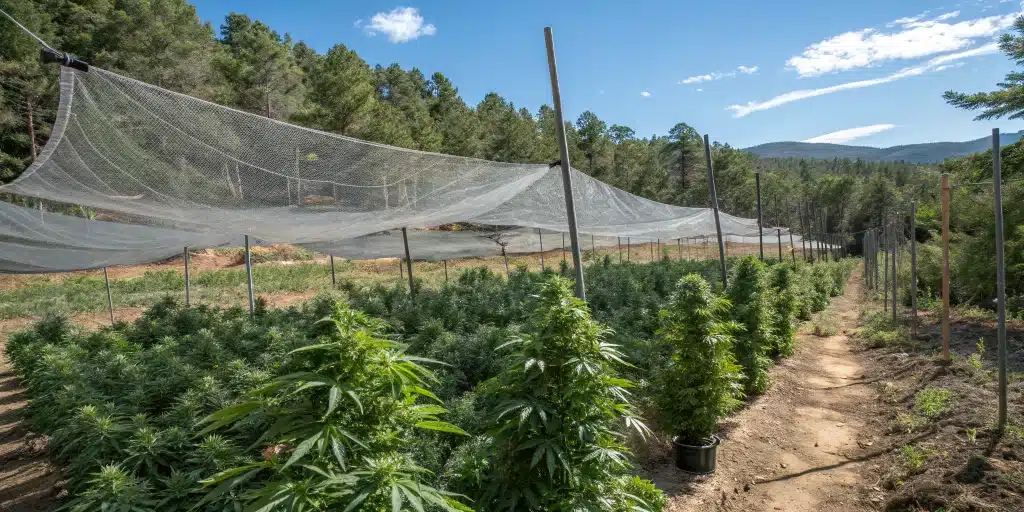
FAQs about outdoor plants flowering too early
What are the main signs of outdoor plants flowering too early?
When you notice premature buds, stunted leaf growth, or an uneven canopy, these may indicate that outdoor plants flowering too early are developing. The plants might also exhibit stress symptoms like discoloration or wilting. Monitoring these signs closely helps in taking early corrective measures. Adjusting environmental factors such as light exposure or watering can help bring the plants back on track. Consistent observation and timely intervention support a more natural growth cycle in your garden.
How can I prevent outdoor plants flowering too early in my garden?
Maintaining stable environmental conditions is key to preventing outdoor plants flowering too early. Ensure that your plants receive consistent light and water by using shading techniques and proper irrigation systems. Regular soil testing and balanced fertilization also help maintain a natural growth cycle. By monitoring weather changes and adjusting cultivation practices accordingly, you can minimize stress on your plants. These proactive measures help keep your garden aligned with its natural flowering schedule while promoting robust, healthy growth.
What adjustments should I make if my outdoor plants start flowering too early?
If you notice that your outdoor plants flowering too early are beginning to bloom prematurely, consider adjusting factors like light exposure, watering routines, and nutrient levels. Implement shading to reduce intense sunlight and modify your irrigation to provide consistent moisture. Regularly check soil pH and nutrient balance to ensure optimal conditions. Making these changes promptly helps delay premature blooming and supports a more natural flowering cycle. These adjustments create a balanced environment that encourages steady growth and a more predictable bloom pattern.



